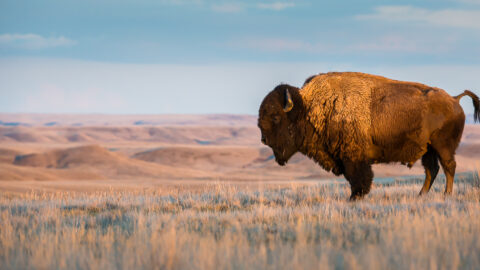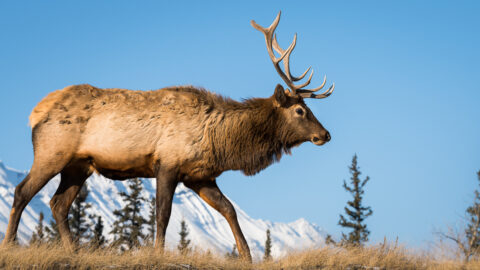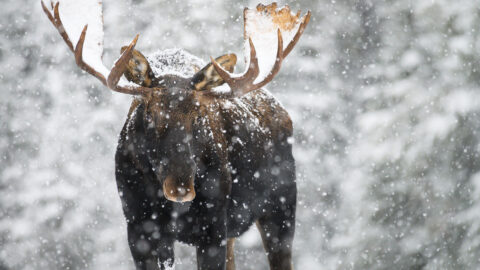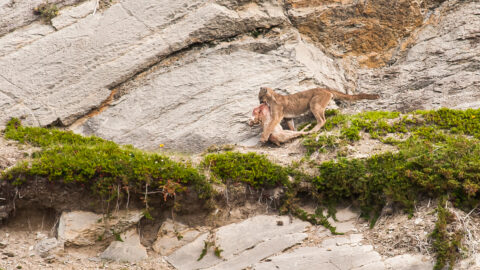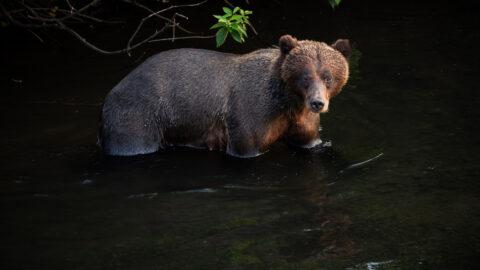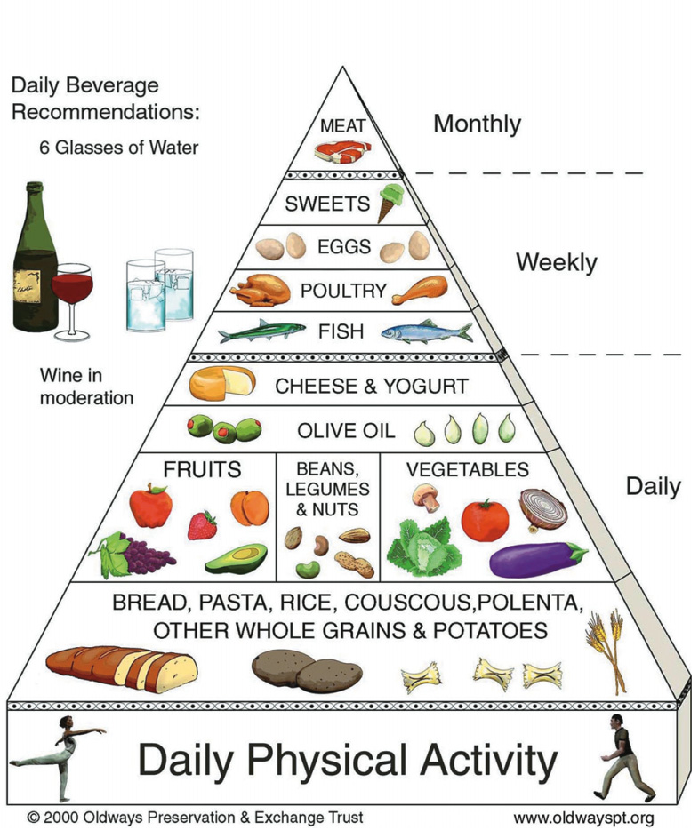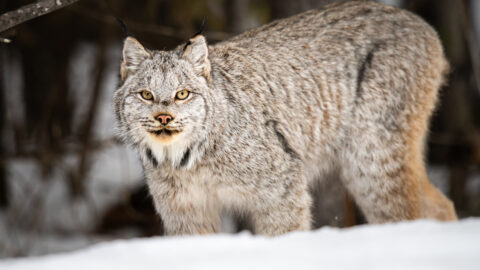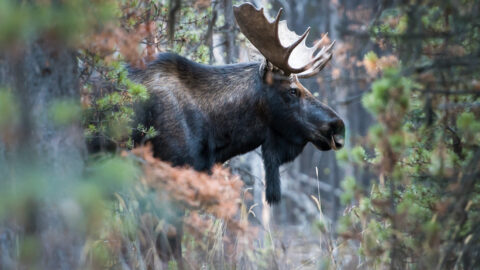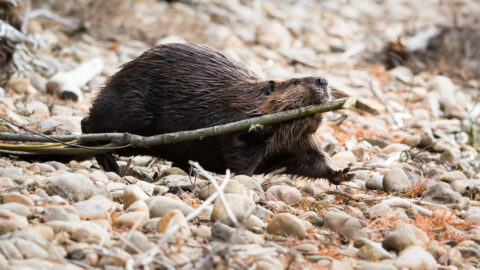The Context of it All
Chapter Two
We all know of the food chain. But how does it actually work?
“The food chain describes the structure of an ecosystem. So, what species are relying on other species to live.”
Thanks biologist Laura Kennedy!
Laura also wants us to realize, “Every single species in an ecosystem has an important role to play in that ecosystem. And, so, you need to protect the entire food chain.”
And as Laura adds, “There is a value in doing that. You might not be able to put a price tag on it, but it’s huge.”
How so?
Scientist Isabella O’Brien explains, “When things at the bottom of the food chain are threatened and start to disappear, then that has a ripple effect throughout the entire ecosystem.”
And that, eventually, impacts us.
“We’re just like animals; we’re part of the circle of life.”
Artist Camilla d’Errico is right.
We’re part of the food chain – part of the massive, complex, interconnected food web.
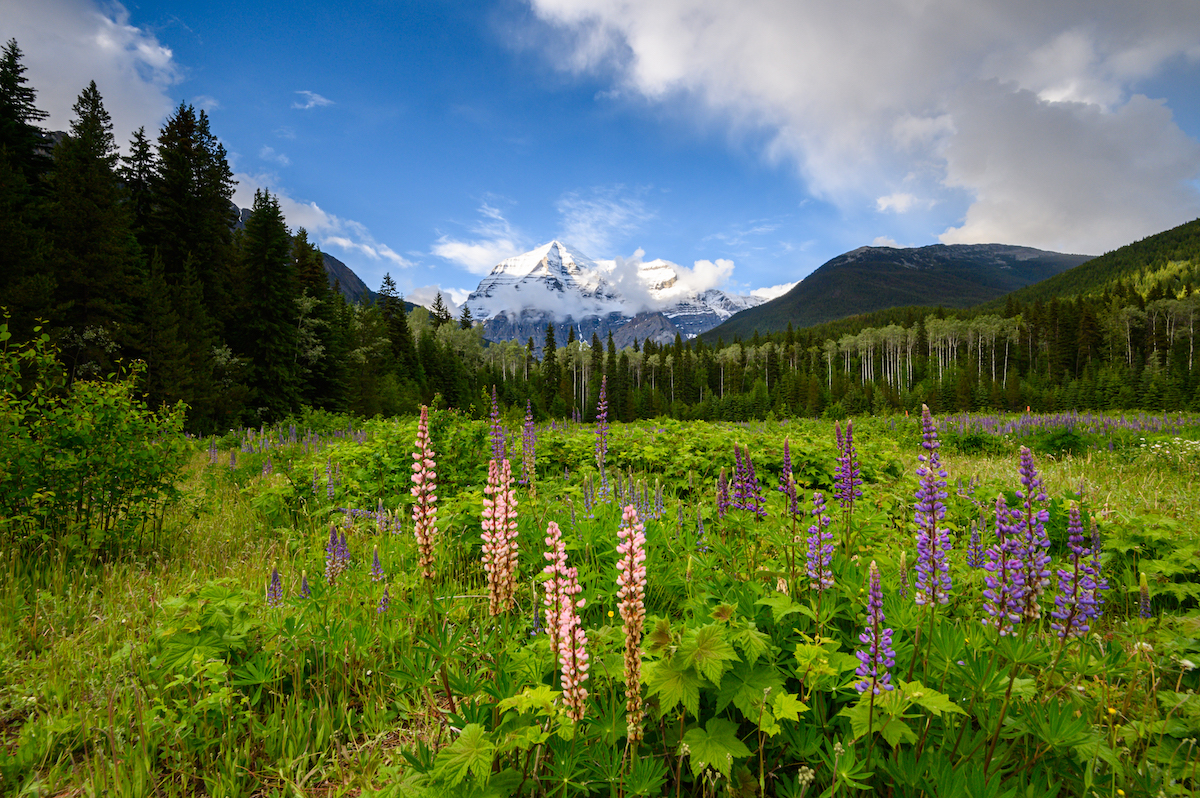 And to understand that reality, it might be easier to start with the food chain here in Mount Robson.
And to understand that reality, it might be easier to start with the food chain here in Mount Robson.
You see, in this ecosystem, there’s incredible diversity of life. But for almost every organism in this landscape, they can trace their origin to a different continent.
Way back in the Pleistocene Epoch, thanks to repeating glacial cycles that altered habitat and food availability, different animals dispersed to North America across the onetime Bering Land Bridge that connected present-day Siberia to present-day Alaska.
Bison travelled to North America millions and millions of years ago. Elk and moose are relative newcomers, dispersing from Eurasia just tens of thousands of years ago. But other species, like cougars and grizzlies? Scientists believe they came in waves.
What does species evolution have to do with food chains? Everything, actually.
As species disbursed across North America, each sought-out a home. Some were similar to their historical homes in Eurasia, while others evolved with their new homes – and the competition that dispersed first. The one constant? Each species, like the grizzly, found a space that was well-stocked with the resources they required to be their best selves – found a role in the emerging food chain.
It’s called an ecological niche and just as Conner McDavid found his niche as a hockey player in our society, grizzly bears found theirs, in part, as regulators of the Rocky Mountain ecosystem.
To be a regulator – to evolve a niche at the top of the food chain – it helps to be a generalist. And, as you know, grizzlies are the ultimate generalists – they’re omnivores that consume everything from roots and dandelions and tree seeds to ground squirrel tartar, moose ribs and salmon sashimi.
Other species? They’re specialists. Lynx, for example, are focused almost exclusively on snowshoe hares. Bighorn sheep? Their niche is the grass of the subalpine.
Each niche is what connects each species to a specific type of environment. And how each species utilizes the resources of specialized habitats – how they compete and alter the resources of a habitat or an ecosystem? It’s how we group every organism into their respective trophic level in the food or energy pyramid.
Look, you know this food pyramid.
And this one isn’t hugely different: Greens at the bottom, fun stuff at the top.
Every organism in every ecosystem can be grouped into a trophic level found on the food pyramid.
Though the grizzly might be found at the top, like all pyramids, the real power is in the foundation. And I do mean power.
The sun’s energy? Grizzly bears aren’t using it to create food, plants are!
That’s right: the food chain’s primary producer is, basically, salad. Through photosynthesis, it converts the sun’s energy to food energy and that, in turn, feeds everything built on its foundation.
Above the primary producers? Primary consumers – the next key cog in the upward transfer of food energy.
Primary consumer is the fancy title for herbivores. You know, our vegan friends like moose, caribou and elk.
Next up? Secondary consumers – this includes small carnivores like otters, fox and marten.
And, finally, at the very top of the pyramid – furthest away from the start of the food energy transfer process? Top carnivores, also known as tertiary consumers.
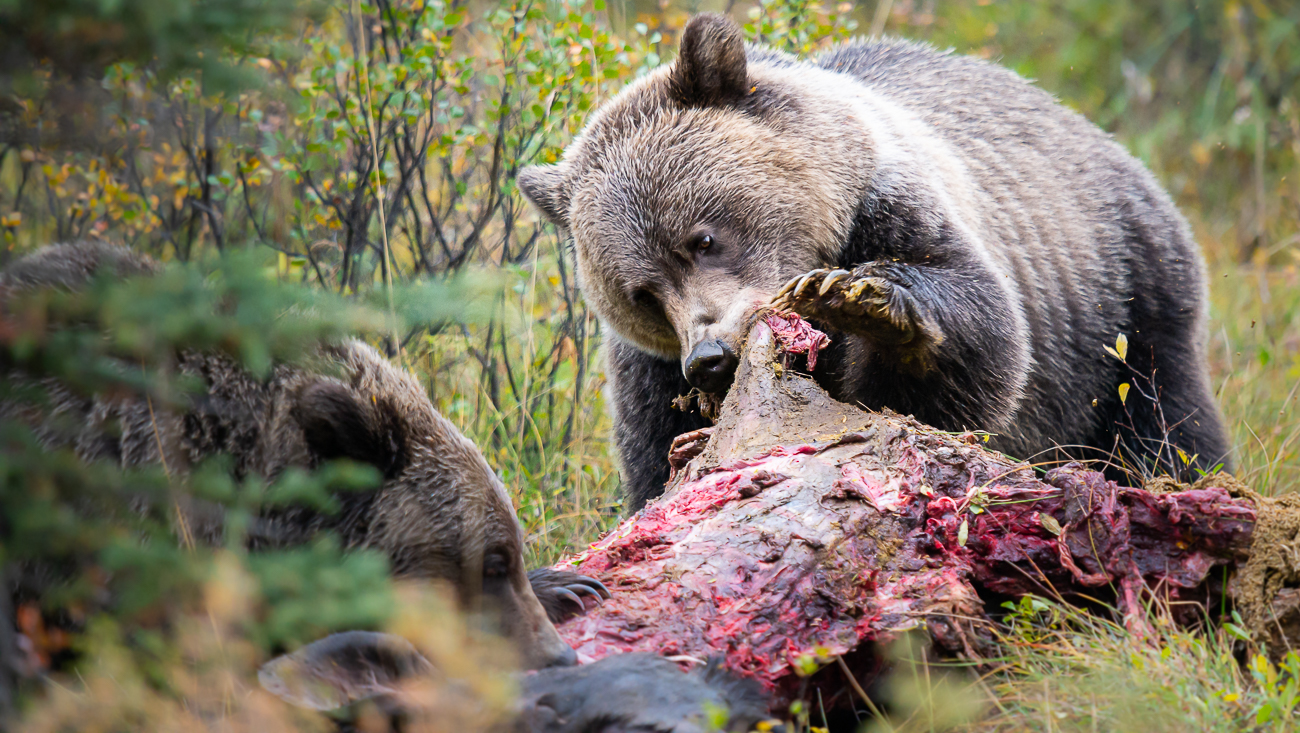
If you watch Conner McDavid play hockey, you’ve probably heard former Hockey Night in Canada host-turned minor league GM Anthony Stewart drone on about the value of tertiary players to a hockey team. He’s usually referring to role players, not the big dogs like McDavid. But in nature – in science – the big dogs – apex predators like grizzlies, wolves and cougars – are tertiary; they’re role players in the food pyramid when you consider where the energy starts and where it finishes.
In other words, grizzlies might rule this ecosystem, but they don’t produce the food, they eat it. And every organism at every trophic level below the grizzly helps create the variety of food – resources – predators like bears and people require for survival.
Turns out, Anthony Stewart is right to rant and rave about the value of tertiary players.
But natural food processes are more complicated than hockey.
At every trophic level, organisms die. Thanks to a special subset known as decomposers – we’re talking bacteria, fungi and other really fun things – nutrients get recycled up and down the food chain, up and down the food pyramid.
It’s what allows each species to have the nutrients they require to survive and rock their niche. And when species perform well in their niche, we get biodiversity – we get life.
It’s why even if bears and other tertiary consumers don’t produce food, they do absolutely influence the food chain and our collective food web.
In fact, all species do.
How?
Check out this story on the lynx. Or this story on the moose. Or this story on the beaver.
With each story – the lynx, the moose, and the beaver – we begin to see that nothing is simple; nothing is one-dimensional.
Lynx might be solely dependent on the snowshoe hare for survival, and their food chain might be relatively simple, but the hare food chain is much more complex, with multiple species regulating their population, including secondary consumers and primary producers.
Beavers might be regulated by a tertiary consumer like wolves, but their niche is partially determined by another primary consumer: moose, also regulated by wolves. And we need that complex, interconnected food chain so that primary consumers – herbivores – don’t overgraze and remove too many primary producers – the plants and trees that help filter water, produce oxygen and feed all consumers, including grizzlies and people.
And when we realize that each food chain connects to another – or many others – we can start to see the food web take shape.
While chains are simple and breakable, webs are more complex and stronger. But equally, in a web, different species can be influenced by organisms outside of their own food chain. It’s how we all connect. It’s why every action can cause a reaction across the food web – sometimes for the better, sometimes for the worse.
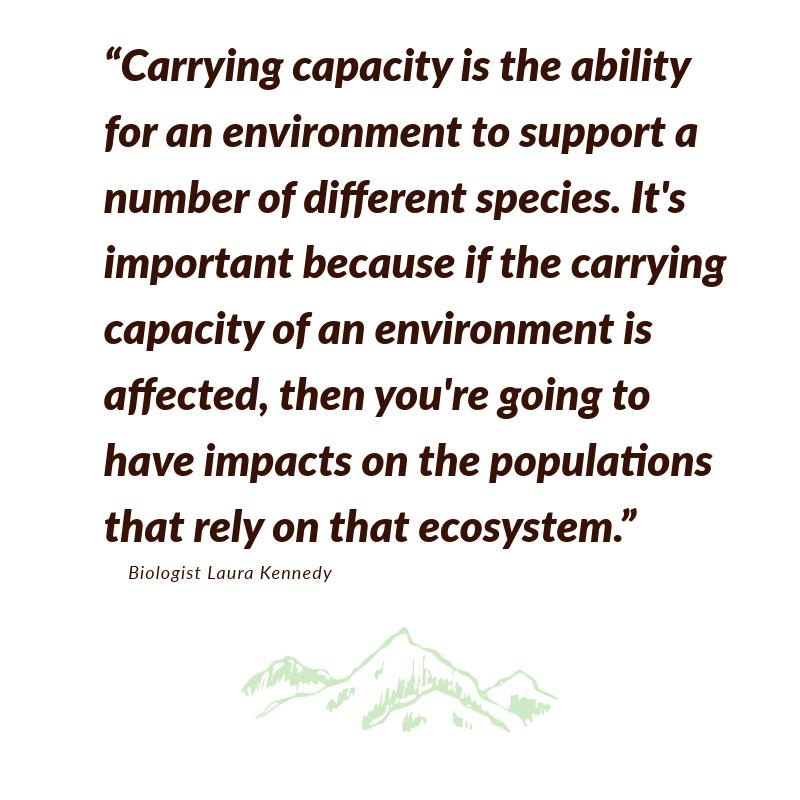 The totality of the food web? That’s also the food diversity of an ecosystem and that goes a long way towards determining the carrying capacity for each species in a landscape like Mount Robson.
The totality of the food web? That’s also the food diversity of an ecosystem and that goes a long way towards determining the carrying capacity for each species in a landscape like Mount Robson.
The carrying capacity? Here’s biologist Laura Kennedy to explain:
“Carrying capacity is the ability for an environment to support a number of different species. It’s important because if the carrying capacity of an environment is affected, then you’re going to have impacts on the populations that rely on that ecosystem.”
We know there is no carrying capacity – no resources in the food web – to help a grizzly survive in a landscape like downtown Toronto or, say, on the rocky slopes of Mount Robson peak itself.
However, within Mount Robson Provincial Park as a whole – which includes inhospitable rocky peaks, but also rich river bottoms and far-ranging open spaces in the sub-alpine – we know the food web here can support as many as 40 grizzly bears. Yet it’s believed only 25 grizzlies call the park home, meaning this ecosystem has surplus capacity, sure, but it also means there are fewer grizzlies than there should be.
Why?

Well, it might be the result of natural ebbs and flows in the food web and its corresponding impact on populations of both grizzlies and its prey. It also might be caused by others factors – ones we should be paying attention to in order to determine the health of grizzly bears and the ecosystem.
After all, unlike Vegas, what happens in Mount Robson doesn’t stay here. Too many or too few grizzly bears in this park might have ramifications for places this ecosystem influences directly, like the Fraser River Basin, or indirectly, like planet Earth.
So, carrying capacity, in other words, helps us understand what should be – and maybe what isn’t. It also helps us understand what’s happened – and what might happen. And whether or not a species is living up to – or beyond or in deficit of – its carrying capacity, is why terms like indicator species, umbrella species and keystones species are thrown around when talking about grizzlies, or other members of the food web. Large charismatic megafauna help us understand how the food chain functions, how we’re impacting the food web and how changes to it might influence us.
And maybe now is the time to bring up one more fact about carrying capacities: The Earth has one for humans too.
No one is certain of what the number is, but resources for every species are finite and because we’re all part of a food chain – all part of the food web – we need to recognize our place in it and understand our impact on it.
That’s why context matters. That’s why food web matters.
